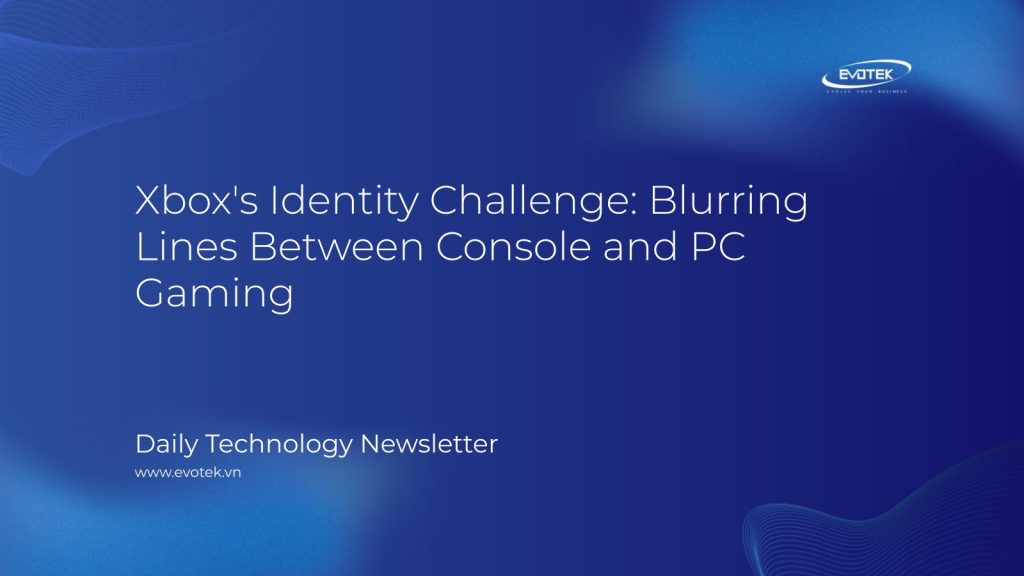Xbox is grappling with a significant identity challenge, as exemplified by the recent Asus ROG Xbox Ally X. Despite Xbox President Sarah Bond affirming it as a true Xbox device, the handheld comes burdened with pre-installed Windows software like OneDrive and Microsoft Teams, raising questions about its core identity among gamers.
The device, priced at a premium, highlights a growing concern: what exactly does “Xbox” mean in today’s evolving gaming landscape? Players are increasingly confused by Microsoft’s strategy, and a lack of transparency is fueling skepticism about the future of the brand.
The Asus ROG Xbox Ally X: A PC in Console Clothing?
Priced at $1,000, the Asus ROG Xbox Ally X is positioned as a stopgap until the next-generation Xbox arrives. However, its design and functionality lean heavily into the PC ecosystem. Microsoft explains that the pricing is determined by Asus, a major PC original equipment manufacturer (OEM), rather than a console manufacturer. This puts the Ally X in the same price bracket as high-end PC handhelds like the Lenovo Legion Go 2, which costs $1,350.
This pricing model contrasts sharply with traditional console subsidies. PC makers, often operating under different economic pressures and tariffs, cannot subsidize hardware as extensively as platform holders like Microsoft. Yet, even Microsoft has increased the price of its five-year-old Xbox Series X by $150 to $650 and hiked Game Pass Ultimate subscriptions from $20 to $30 monthly, making the annual cost of day-one access $360.
Gamer Confusion and the Need for Clarity
Xbox views the ROG Xbox Ally X as a “true-blue Xbox,” but its PC-centric nature can confuse casual console players. The presence of productivity apps and the inability of some Xbox-specific games to run directly on the handheld—though cross-saves may work—muddy the waters. Even Seamus Blackley, often credited as the father of the original Xbox, famously questioned if the Ally X was “actually just a branded laptop with joysticks?”
Bond’s assertion that the Ally X caters to “power players” while the standard $600 Xbox Ally is for a “casual” crowd, targeting 720p gaming on a 1080p screen, struggles to convince when a competitor like the Nintendo Switch 2 offers native 1080p gaming for $450.
Navigating Technical Hurdles and Optimization
The ROG Xbox Ally X runs a customized version of Windows featuring a “full screen experience” (FSE) interface. While this UI is lauded as one of the best for Windows handhelds, it’s still a work in progress, with reported issues like rapid battery drain during sleep mode. Xbox has acknowledged these flaws and is reportedly working on fixes.
A significant distinction from dedicated consoles lies in game optimization. Unlike a true console release where developers would fine-tune games for specific hardware, titles played on the Ally X often require manual graphics adjustments. This stands in stark contrast to the Nintendo Switch 2, which leverages Nvidia’s DLSS AI upscaling technology to deliver intensive games at stable frame rates on its native resolution, thanks to developer-level optimization.
The next-generation Xbox, expected around 2027, will likely utilize AMD RDNA 5 microarchitecture and its FidelityFX AI upscaling, mirroring the industry’s move towards AI-powered resolution scaling for improved performance. This technology will be crucial for the next wave of gaming experiences.
The Path Forward: Rebuilding Gamer Trust
Despite a promising lineup of upcoming games like Ninja Gaiden 4, Obsidian’s The Outer Worlds 2, and Double Fine’s Keeper, a segment of the Xbox audience feels disenfranchised. The increasing costs of hardware and subscriptions, coupled with an ambiguous platform vision, make it difficult for players to remain enthusiastic.
Bond describes the Xbox Ally as an “opportunity to innovate in a new way” and offer “another choice.” However, with the next dedicated Xbox console still years away, Microsoft faces a critical period. To regain momentum and address its identity crisis, Xbox must clearly articulate its vision for the future, demonstrating how its products and services offer compelling value and a coherent gaming experience. Without this transparency, 2026 could prove to be a challenging year for the brand and its loyal fanbase.

 日本語
日本語 한국어
한국어 Tiếng Việt
Tiếng Việt 简体中文
简体中文